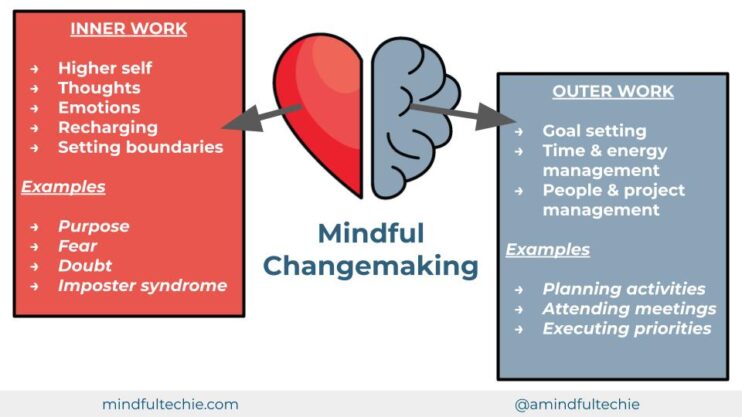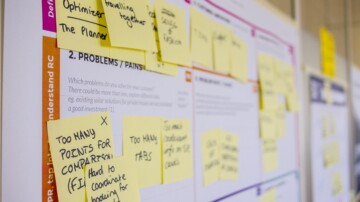How to Thrive When Work Doesn’t Love You Back

The following is an excerpt from How to Thrive When Work Doesn’t Love You Back A Practical Guide for Taking Care of Yourself While Changing The World by Meico Marquette Whitlock and a foreword by Beth Kanter
3 Ways to Thrive When Your Work Doesn’t Love You Back
You’re committed to making a positive difference in the world. You love what you do and you’re good at it. But given the realities of today’s 24/7 world, you’re grappling with how to keep up, make a meaningful impact, and live a fulfilling life with so many things competing for your limited time, attention, and energy.
I know because I used to be like you, and I’ve helped countless changemakers just like you over the years improve their well-being so they could have a more sustainable impact in changing the world. During my previous career, I was often on the edge of burnout doing my part to fulfill my organization’s vision of a world free of HIV and hepatitis.
At my lowest point, I was severely depressed, the heaviest I’d ever been in my life, and feeling like a failure even though I was burning the candle at both ends. I was doing the work of an entire department while trying to build a team and steer a clear course for my organization. There were days I didn’t feel like getting out of bed. And there were more days I simply couldn’t get out of bed because my body wouldn’t let me.
No matter how long, hard, or smart I worked, there was never enough time or resources to get it all done.
I realized that even if I worked myself to death, the work wouldn’t stop. The emails would keep rolling in and the projects would keep moving ahead—this time without me.
Unfortunately, stories like mine are common among changemakers. But it also doesn’t have to be this way. It took me nearly coming face-to-face with a life-threatening health crisis to have this realization. I was fortunate because my low point was the beginning of a beautiful journey that led me to dedicate my time to helping changemakers like you do great work even better while taking good care of yourself along the way.
The truth is we have inherited a way of working that hasn’t worked for a very long time. And there are organizational and societal issues we must confront head-on if we’re serious about long-term solutions for everyone. That’s why I’m on a mission to support you in balancing your well-being, work, life, and modern life’s distractions so you can focus more on mission-critical activities by holistically addressing the inner work (mental and emotional labor—connection to purpose, mindset, thoughts, emotions) and outer work (“physical” labor— time, people, and project management).

Making this shift starts with understanding that well-being in the workplace isn’t just an individual concern. It’s also the responsibility of the organizations we serve. This responsibility requires us to recognize we can recover from and prevent burnout, but only when we intentionally approach well-being at all levels of our organization.
But the good news is that you can prioritize well-being and ground yourself in what seems like a groundless world, no matter your level or role in your organization. You can find your version of balance amid the seeming chaos.
The reality is you’re not the Energizer Bunny or an automaton with endless energy. Rest is a necessary and important productivity tool—and an important part of doing the inner AND outer work of being a mindful changemaker. I know the world seems to be speeding up, and your to-do list seems never-ending. You may often feel like everything is urgent and important, and you’re overwhelmed with where to start. You also know you must make time to rest, reflect, plan, and recharge. But you look at your overflowing email inbox and overloaded calendar and wonder—When?! How?!
But generating space for rest, reflecting, planning, and recharging is essential for working sustainably as a changemaker. Here are three strategies to help you get started.
1. Create a Start-and-Stop Routine
Too many of us check emails, respond to text messages, scroll through social media, and go through our mental checklists before even rolling out of bed. We spend our days in back-to-back meetings and sit in front of a screen all day.
You can break this pattern by identifying a start-and-stop ritual to bookend your days and carve out time to refill your cup. The start ritual is something you do for yourself before jumping full steam ahead into your day. Examples include having a cup of tea, walking the dog, or doing yoga. Similarly, having a stop ritual, like putting away your work computer or starting dinner, helps signal the close of your workday.
If your time is limited or you’re overwhelmed with where to start, consider starting with just five minutes for yourself at the beginning and end of each day. If you have a non-linear workday, you could also consider having multiple start and stop routines throughout the day.
Your routine doesn’t need to look the same way every day and can change based on factors such as whether you’re traveling, working remotely, or in a particular season of life and work. For example, when I travel or on days when I have early morning client engagements, I adjust my start routine to account for this shift. In practical terms, this means I have 5, 10, 20-minute and longer versions of my daily workout, yoga, and meditation routines. I give myself the grace to choose what makes sense for the day. No matter the length, location, or format, I can check it off as complete and feel the same sense of accomplishment as I head into my day.
Likewise, if my day gets off to a rocky start, I give myself permission to restart at a different time. I think of this as having breakfast (my favorite meal of the day!) for dinner. So, maybe an emergency client request comes in the morning. No big deal. After I address the request, I look at my schedule to assess when I can realistically restart my day and which version of my routine will support me in doing that.
2. Know Your Meeting Number
You’ve probably seen advertisements for the Sleep Number bed. It’s the bed where you change how firm or soft you want your mattress to feel by adjusting the Sleep Number setting. What if you could do the same for the amount and length of meetings you participate in, whether they are virtual, hybrid, or in-person? What impact would having a meeting number have on your mental health?
According to Daron K. Roberts, former NFL Coach and Founding Director of the Center for Sports Leadership and Innovation at University of Texas, shifting your mindset in this area could save your life.
So, what’s your meeting number? It’s two-fold: 1) your maximum number of meetings in a day, and 2) the maximum length of any given meeting. For example, for my current season of work my meeting number is: Three meetings max/day @ up to 50 minutes each.
This means the maximum number of meetings I schedule in one day is three. The maximum length of any given meeting is 50 minutes. Of course, there are exceptions. But this is my general guideline for meetings at the moment.
Here are few questions to help you determine your meeting number:
- How many meetings (virtual, hybrid, or in-person) should you have in a day? How many meetings are too many before they become counter-productive and impede progress on getting all the tasks done that generated by the meetings?
- How long should they be? How long is too long before it becomes counterproductive, hard to focus, and unengaging?
- Which meetings shouldn’t be meetings?
There’s no one right answer. Your meeting number will vary based on the nature of your work and may also fluctuate based on the season. A great place to start with figuring out your number is to:
- Identify your top priorities for next week. Start with your top two.
- Estimate roughly how much time you need to complete them.
- Review your calendar and see how many meetings you have scheduled next week and their combined length. Does the number and length of the meetings leave time for you to complete your top priorities?
If not, your de facto meeting number may be too high. If you want to lower your meeting number, try time-blocking your non-meeting activities, such as writing a grant proposal or working on the budget for next fiscal year.
Time blocking is a time management method that asks you to divide your day into blocks of time for each activity or priority. It can help you carve out the space to focus on your top priorities. For example, this week, you need an hour to work on a presentation for your next board meeting and two hours to write a grant proposal. At the beginning of the week, set appointments on your calendar for the allotted time, and make sure to set the appointments to “busy.” That way, when someone tries to book a meeting with you, you already know those two priorities are accounted for in your schedule.
3. Practice Digital Social Distancing
When working, eating, sleeping, and spending time with loved ones, we have a perfect opportunity to be socially distant from our devices. These breaks allow our brains and bodies to recover from the stress of being constantly connected.
Here are some ways to put social distancing into practice with your technology:
- Start by charging your devices outside your workspace. You can add tech breaks to your calendar to check in on any important calls or messages throughout the day.
- Turn off notifications for non-mission-critical apps.
- Put away your devices during meals.
- Buy an actual alarm clock and charge your devices outside your bedroom so you can get uninterrupted rest at night.
- Shut off your screens at least 30 minutes before bedtime. Screen time before sleep raises cortisol levels and impacts the quality of your sleep.
While there are many things not within your control, the good news is you can prioritize well-being and ground yourself in what seems like a groundless world no matter your level or role in your organization. You can find your version of balance amid the seeming chaos.
The reality is if you really want to make a difference, you must start by taking time for yourself right now because you can’t “change the world” if you’re not around long enough to make that happen. This isn’t about working harder and smarter; it’s about making a commitment to work differently so that you can take care of yourself while making an impact for the long haul.To learn more from Meico about prioritizing wellness at your foundation or nonprofit, check out his strategy guide, How Grantmakers Can Jumpstart a Culture of Well-Being for Employees and Grantees.



